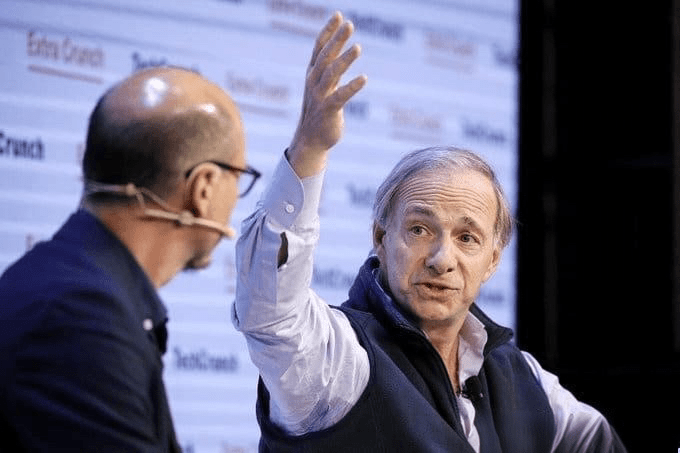In July 2025, the global investment community received a highly impactful signal - Ray Dalio, Michael Burry, and Jeremy Grantham, three legendary investors with vastly different styles who rarely agree, simultaneously issued warnings about the global economy, with their core risks pointing to a highly overlapping area: a systemic crisis that may rewrite financial rules could erupt within the next three years. All three have a history of 'accurately predicting black swans': Dalio foresaw the 2008 financial crisis, Burry made $800 million by shorting subprime mortgages (the prototype of 'The Big Short'), and Grantham successfully captured the burst of the internet bubble and other market crashes; the weight of their collective warning is self-evident.

1. Core warnings from the three major investors: Risks focus on the 'systemic failure' of U.S. Treasuries.
The concerns of the three major investors are not mere chatter; they collectively point to the 'stabilizing force' of the global financial market - the U.S. Treasury market, revealing crisis risks from different dimensions.
1. Ray Dalio: The 'heart disease' of the U.S. economy is approaching a critical point.
Dalio compares the current U.S. economy to 'a patient with heart disease', with the core problems being uncontrolled debt and the exhaustion of liquidity in the Treasury market:
Debt levels have peaked: U.S. federal debt has reached $37 trillion, with government spending exceeding income by 40%, equivalent to 'paying off a credit card with another credit card', making the debt snowball model unsustainable.
The risk of the Treasury market 'jamming': The U.S. Treasury market, valued at $27 trillion, is the pricing benchmark for global loan rates (mortgages, auto loans, corporate bonds). In April 2025, liquidity in this market dropped to 25% of normal levels, and bid-ask spreads doubled. Dalio believes this is a dangerous signal of 'systemic cramping'.
The time window is tight: He clearly warns that if the debt and liquidity issues cannot be resolved within the next three years, the Treasury market may completely 'stop functioning', at which point the borrowing costs for ordinary people could double overnight, and the financial system would fall into total dysfunction.
2. Michael Burry: Betting on AI leaders, warning of a 'chain collapse'.
Burry, known for his contrarian investments, has already signaled action as the liquidity crisis in the Treasury market began to emerge - putting half of his investment portfolio (approximately $98 million) into 900,000 Nvidia put options, based on his logic:
Nvidia's 'systemic weight': As the core of the AI supply chain, Nvidia accounts for 6.5% of the U.S. stock market value, and almost all AI companies rely on its chips; its stock price fluctuations are sufficient to trigger a market chain reaction.
The bubble has already shown cracks: In early 2025, Nvidia's stock price plummeted by 40%, triggering fluctuations in the U.S. stock market. Burry believes this is just the 'prologue' - if a crisis erupts in the Treasury market, the overvalued AI sector will become the first 'pressure release point', which will then transmit to the entire stock market.
3. Jeremy Grantham: The three phases of 'super bubbles', this time with no safe havens.
With 50 years of investment experience, Grantham uses models to judge that the world is currently in a 'super bubble covering all asset classes' and has entered a critical stage.
Phase one (early 2025): Asset prices plummet rapidly, and the market begins to taste panic.
Phase two (current): The market rebounds, and investors mistakenly believe that 'the crisis is over', rushing to buy the dip, creating a 'false stability'.
Phase three (next three years): A real collapse will arrive, with stocks, bonds, real estate, and commodities declining simultaneously.
The core difference that makes it more dangerous than 2008: During the 2008 crisis, U.S. Treasuries were still a global 'safe haven', and the Federal Reserve could print money to save the market; this time, the 'safe asset' (U.S. Treasuries) itself has become a source of risk. Once it collapses, global investors will have 'nowhere to escape'.
2. Historical reflections: 'Trust transfer' during crises and personal responses.
Looking back at the 2008 financial crisis, the collapse of Lehman Brothers caused 25,000 layoffs, while personal finance mentor Dave Ramsey and countless independent finance bloggers quickly rose to prominence, becoming trusted sources of information for the public - this reveals the pattern that 'when institutions fail, personal trust channels accelerate to replace them.' If this warning proves true, the scale and speed of this 'trust transfer' may far exceed previous occurrences.
The collective warning from the three investors is not an 'economic apocalypse prophecy', but rather a reminder to the global market:
1. The fragility of the global economy has reached historically rare levels; the health of the U.S. Treasury market is more critical than that of the stock market, real estate market, or cryptocurrency market.
2. If 'safe assets' (U.S. Treasuries) collapse, existing financial rules will be completely rewritten, and 'no safe haven' may become the new reality.
3. For individuals, focusing on debt risk in advance, avoiding high-leverage investments, and reserving liquidity will become core strategies for responding to potential crises.
When the 'safest asset' turns into the biggest risk source, the real test is not whether to believe the prophecy, but whether one is prepared for 'rule reconstruction.'
